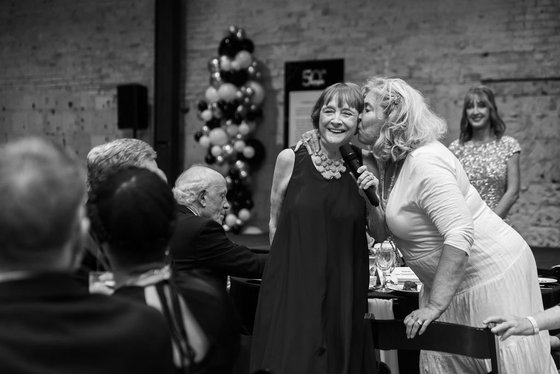newsletter
Sign up for the Marketer QuickLook Newsletter
SMPS Headquarters
625 North Washington Street
Suite 302
Alexandria, VA
22314-1936
email
info@smps.org
phone
703.549.6117



How to Communicate to Five Different Generations
in Your Market


By Dawn Wagenaar
Feature



Welcome to decisions by committee. It’s happening inside many A/E/C firms and it’s certainly happening among your clients. Whether you focus on government contracts or privately held clients, they are scoring and selecting firms by involving the opinions of multiple stakeholders.
Right now, those stakeholders include up to five generations.
Why is this important to know? Each generation brings its own bias and belief system and methods of communication to the negotiating table. You may also experience power plays between incumbent and aspiring successor leaders. Add some family dynamics within market segments such as parent owners and adult child executives, and you definitely need to understand generational differences.
Within your chosen segments, you may encounter Traditionalists, Boomers, Millennials and GenXers on conference calls or through the proposal process. If the org chart is flatter, you may even contend with an ambitious GenZer influencing business decisions.

Phygital refers to a seamless integration between digital and physical experiences for clients. The approach bridges gaps between communication channels to enhance understanding and decision points.
In the June/July 2023 issue of The Marketer, I touched on the communication styles and preferences of five different generations inside A/E/C firms. You have a similar challenge of diverse interests and preferences with your prospects and clients. This requires a multi-channel approach offering “phygital” experiences that resonate with all stakeholders.
Phygital refers to a seamless integration between digital and physical experiences for clients. The approach bridges gaps between communication channels to enhance understanding and decision points.
Phygital marketing and communication appeal to all generations. Most (let’s face it, all) prospects want the ease of reaching out at their convenience. They also want:
- Respect
- Personalized experiences
- Immediacy
- Relevance
- Fun
With your multi-generational audience, think about similarities first. Then explore the preferences, processes, and marketing channels for each generation. This perspective will help you to be more visible and engaging in your marketing and business development approaches.

Examples of Multi-Gen In-Person or “Physical” Experiences
Examples of Multi-Gen In-Person or “Physical” Experiences
Each generation enjoys physical experiences that match their comfort level and definitions of personalization. In this chart, I’ve outlined some broad generational differences that can inspire marketing ideas for clients and prospects. If you identify two or more generations within a market segment or industry that you serve, feel free to mix and match experiences for them. It will make your events more engaging.
For example, GenXers, Millennials and GenZers all enjoy experiences that combine entertainment with some education and personalization. If you did a wine tasting, you could invite people to wear something red or white (or pink!) to match their go-to wine. Offer a demo for a fruity wine spritzer and have people vote live on their favorite wine of the event. This will add enjoyment across generations.
Examples of Multi-Gen Digital Experiences
Examples of Multi-Gen Digital Experiences
If you want to go further with phygital experiences across the generations, then your digital experiences should complement the brand and experience that clients and prospects have in the physical world.
They may meet you at a trade show and then look up your LinkedIn profile and your website. Did their experience in person match what they found online? Are there any obvious disconnects regarding branding, key messages or capabilities? Is it easy for them to explore further and take the next step on their own when ready?
Here are three scenarios of multi-generational digital marketing experiences that can help you bridge gaps between physical and digital lead nurturing.
Scenario A – The Prospect Lunch
(Millennial, GenX, GenZ)
Your business development manager has an upcoming prospect lunch with a new facilities administrator within a university that you have been pursuing as a client for a couple of years. You suggest that they share with you what they love about campus flow or facilities and what they know needs improvement. You have a younger associate/recent graduate take a tour of these areas and share key thoughts during the lunch about their experience (with preparation, of course).
After the lunch, your higher education team lead sends a short video introducing herself with a link to your higher education projects. The project page focuses on outcomes and offers related blog posts for additional information about your approach to higher education.
Scenario B – The Webinar Lead
(Traditionalist, Boomer, GenX, Millennial)
You are hosting a hot topic, quarterly webinar to help grow a market segment, and you want to draw interest from several states. You also want to engage decision makers who tend to sign up for the recording, but then don’t attend. You promote the webinar on various channels, including handwritten invitations. You also offer an incentive that anyone who actively participates in the webinar is entered into a drawing to receive coveted tickets, swag or a VIP experience. As a follow-up, you announce the winner live and include that video in social reels and promotion for the next webinar. Gather testimonials from the webinar to earn third-party validation for the value of your content.
Scenario C – The Client Referral
(Boomer, GenX, Millennial, GenZ)
A valuable client refers a prospect to the firm and encourages the team lead to take a tour of the client’s headquarters. The team lead dresses in your firm’s colors or logowear for the tour. After the tour, the prospect brings several people to the conference room to briefly learn more about your firm. As part of introductions, the team lead asks each person to share something about themselves, their kids or their pets. In anticipation of a meeting like this, marketing has also prepared a placemat on recycled paper featuring key team members, capabilities, and a few bullet points about how the referring client’s projects have benefited from a relationship with your firm. On the back side, you include your core values, testimonials and a puzzle. You invite them to solve the puzzle and email the answer to marketing for a prize.
The team lead or BD professional in charge of the account follows up with a personal email to each attendee, mentioning each person’s personal share about self, kids or pets, and thanking them for their willingness to participate in the meeting. You invite them to stay connected with a link to your personal LinkedIn profile and a link to the firm’s capabilities pages. Make plans for a proposal and/or the RFP process.
Do Persona Research
Do Persona Research
Before you can pull off these scenarios, I assume that you have done your research on the types of prospects and clients in your market. Persona research that includes generational perspectives will enrich your understanding of the decision making dynamics and communications preferences of your audience. A project partner or prospect whose leadership is Boomers and GenXers will respond differently to marketing and communications than a company led by Millennials.
Personas should include the following:
- Title or role
- Age range and generation
- Decision-making power
- What influences them
- Communications preferences
- Pains or challenges
- Services and capabilities to solve pains and challenges
Create Key Messages/Talking Points
Create Key Messages/Talking Points
As prospects get younger and more tech oriented in their approach, one might assume that phygital marketing will move completely to digital marketing that appeals to AI-empowered querying and more invitations to use proposal portals.
As a GenXer, I hope not. And I can see echoes of Traditionalists in the positive way that GenZ responds to immediate peer feedback and live chat rooms. We all want to know the people behind the project for quality control, creativity and career enjoyment. We want that human connection.
For now, be ready for those conversations about why your firm is unique in its approach and how you make a positive impact with your work, how you solve problems and improve timelines and efficiencies. Your principals, project managers, supers and team leads should all be trained on brand promises, personas and talking points just as well as your marketers, business development professionals and HR. They interact with clients more often and represent your work results. The younger these professionals are, the more interested they are in understanding how they make a difference to help the firm grow.
Who knows? As people live longer, we may have up to six generations to consider in the future A/E/C markets. Get started now on marketing to generational differences (and similarities). It is one more method to help your firm stand out as a thoughtful, approachable partner in client decisions and projects.
Tips to Begin:
Tips to Begin:
1
Do some generational research to understand your client base and market.
2
Add generational perspectives into your project briefs and/or personas.
3
Keep in mind generational differences/interests when creating in-person events.
4
Be open to the ideas and wisdom of your professionals regardless of age.
5
Think ‘phygital’ when building campaigns to keep communications personal and interactive.
Share:
Dawn Wagenaar is a strategic branding consultant and owner of Ingenuity Marketing Group, LLC, a member of SMPS and a strategic partner to A/E/C marketing leaders and firms.
For more information, visit
ingenuitymarketing.com
READ NEXT
























